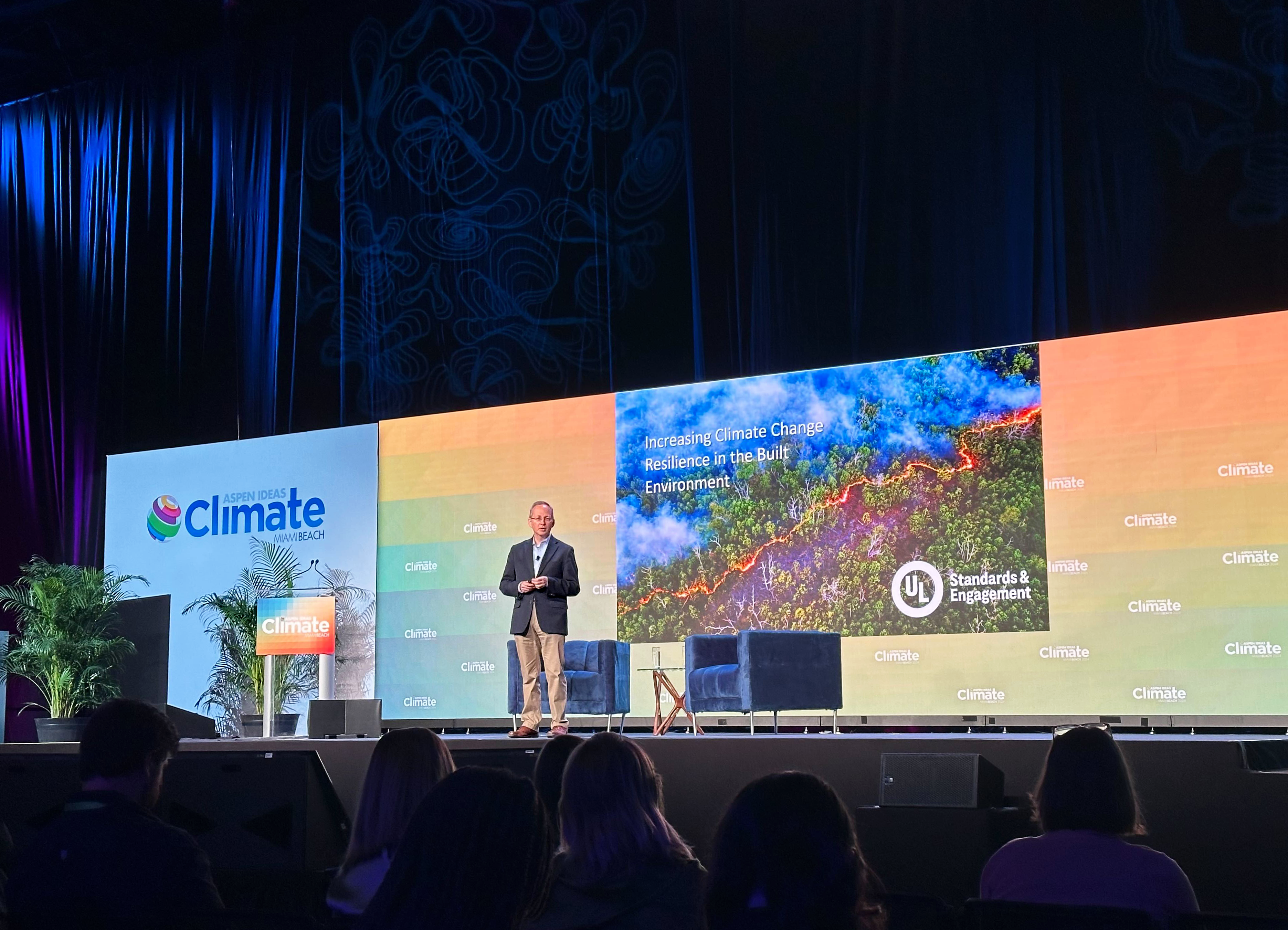-
Perspectives
March 14, 2024
Creating Climate Change Resilience in the Built Environment

By Dr. David Steel, executive director of UL Standards & Engagement
A rise in the frequency of heatwaves, heavy precipitation events, severe droughts, more destructive hurricanes, and intense wildfires are part of the present and expected to take on more prominence in the future.
To increase climate change resilience, reduce the risk to human life and safety, and limit costly property damage, the built environment needs to be reconsidered — and standards are a pathway for getting to greater climate adaptation.
Wildfires and Severe Weather: The New Normal
Drought conditions have made areas across the globe veritable tinderboxes. Wildfires are no longer a California or even a Western states problem. We’ve seen fires in London, Chile, and Maui. In recent weeks, we saw the worst wildfires in Texas history. All these events have a commonality: devastating human tragedy and destruction to countless communities.
We keep seeing superlatives refer to wildfire and other severe weather events. Historic. Unprecedented. Once in a century. These monikers have become so ubiquitous, we don’t react with the same alarm. But we must react.
New, unfamiliar extremes require us to rethink the way we build and secure property. The built environment is affected in many ways by the effects of climate change. Extreme heat can kink metal. Wind speeds can shred rooftops and siding or send objects flying into windows. Sea-level rise, extreme rain, or atmospheric rivers can drive higher risk of flooding in more areas. Droughts can buckle asphalt driveways and heavy snow loads can weigh on roofs not intended to support the weight. And wildfires can destroy entire communities in hours.
The Collision Course Between Extreme Weather and Insurance Liabilities
Billion-dollar disaster events have steadily risen over the last two decades. One of the myriad effects of climate change includes an uptick in property damage – and who pays for it. Historically, insurers looked to past events to determine the risk of future damage, but the algorithm is changing. Insurers must now forecast.
Rates are skyrocketing across the country. Homeowners are getting dropped, choosing to forgo property insurance, or having claims go unfunded or underfunded. In California alone, the two largest homeowners' insurance companies in the U.S., State Farm and Allstate, have paused issuing new policies.
As severe weather events increase, more states will find themselves responsible for providing residents with economic relief. This was the case for the Louisiana Insurance Guaranty Association, a state entity established by law to provide a safety net for policyholders should an insurance company declare bankruptcy. LIGA borrowed $600 million in 2022 to resolve unpaid claims. The debt ultimately cost the state $874 million.
The Role of Standards in Supporting Greater Resilience
Standards can help properties stand up to these extreme conditions, improving safety and reducing property damage. At UL Standards & Engagement, we have 120 years of experience in safety standards development.
We issued our first standard in 1903, which set requirements for fire-resistant doors. It was the beginning of a significant body of work mitigating fire risk and damage. That work has taken on greater importance as wildfires grow in intensity, not only in California but across the world.
With more than 160 standards in the fire space, our standards are working to prevent fire ignition, support effective fire containment, and reduce and extinguish fires. These standards help limit damage in the built environment by looking at burning characteristics of materials for products such as roof coverings that can withstand heat in extreme situations.
Beyond what’s in our standards library today, we are actively exploring new ways for standards to support greater resilience. Just one example, we are exploring how to determine the impact of thermal heat from wildfires on underground water pipes to see if there are contamination concerns that could be mitigated through standards.
The list of considerations is long and growing. It also isn’t limited to wildfires.
UL Standards & Engagement recently participated in a climate change adaptation initiative to assess our standards that mitigate damage caused by severe weather events. To date, 22 of our standards have been updated to include requirements that improve the durability of building materials and public infrastructure against environmental conditions including, but not limited to, extreme snow loads, wind force, flooding, temperatures, and UV exposure.
Adoption of Standards is Critical to Reducing Vulnerability
By and large, standards are voluntary. While our library, existing and prospective, is long, the list of those required is considerably shorter. Some standards are required in building codes but it’s a state patchwork and not required everywhere. A report from the National Oceanic and Atmospheric Association said, “Vulnerability is especially high where building codes are insufficient for reducing damage from extreme events.”
Increasing climate change resilience aligns with our mission of working for a safer, more sustainable world. Individually, none of us have the answer to climate change resilience. But our respective roles are powerful in concert.
That was the message I delivered at Aspen Ideas: Climate earlier this week. We welcome discussion, partners, and action that will benefit our planet and our people.
